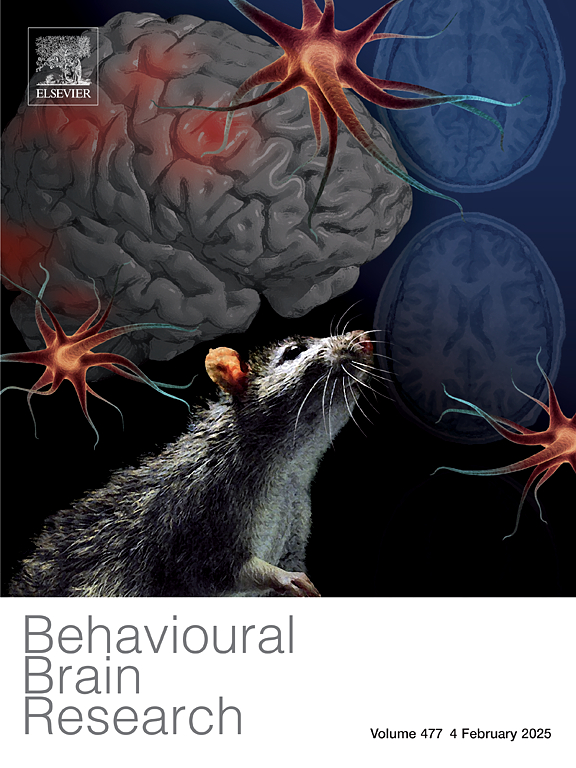甲基苯丙胺使用障碍个体的运动冲动与线索诱导的渴望和中枢β振荡的联系。
IF 2.3
3区 心理学
Q2 BEHAVIORAL SCIENCES
引用次数: 0
摘要
本研究探讨了甲基苯丙胺使用障碍(MUD)中冲动与线索诱导渴望之间关系的神经生理机制。42名男性MUD患者和46名健康对照者在休息和虚拟现实提示暴露期间的脑电图记录显示了三个关键发现:首先,MUD患者在提示暴露期间中央-顶叶β功率(Cz/Cp1)显著增加(p < 0.001)。其次,中介分析表明,运动冲动性(BIS-11)既直接加剧渴望(β = 0.326, p = 0.001),又通过增强β振荡间接减弱渴望(间接效应:β = -0.081, 95% CI[-0.189, -0.001])。第三,净效应为正(总效应= 0.244),表明补偿不完全。这些发现强调了中枢β振荡作为高冲动个体渴望调节的潜在生物标志物。本文章由计算机程序翻译,如有差异,请以英文原文为准。
Linking motor impulsivity to cue-induced craving and central beta oscillations in individuals with methamphetamine use disorder
This study investigated neurophysiological mechanisms underlying the association between impulsivity and cue-induced craving in methamphetamine use disorder (MUD). EEG recordings from 42 males with MUD and 46 healthy controls during rest and virtual reality cue exposure revealed three key findings: First, central-parietal beta power (Cz/Cp1) significantly increased during cue exposure in MUD patients (p < 0.001). Second, mediation analysis demonstrated a dual pathway where motor impulsivity (BIS-11) both directly exacerbated craving (β = 0.326, p = 0.001) and indirectly attenuated it through enhanced beta oscillations (indirect effect: β = −0.081, 95 % CI [-0.189, −0.001]). Third, the net effect remained positive (total effect = 0.244), suggesting incomplete compensation. These findings highlight central beta oscillations as a potential biomarker for craving regulation in high-impulsivity individuals.
求助全文
通过发布文献求助,成功后即可免费获取论文全文。
去求助
来源期刊

Behavioural Brain Research
医学-行为科学
CiteScore
5.60
自引率
0.00%
发文量
383
审稿时长
61 days
期刊介绍:
Behavioural Brain Research is an international, interdisciplinary journal dedicated to the publication of articles in the field of behavioural neuroscience, broadly defined. Contributions from the entire range of disciplines that comprise the neurosciences, behavioural sciences or cognitive sciences are appropriate, as long as the goal is to delineate the neural mechanisms underlying behaviour. Thus, studies may range from neurophysiological, neuroanatomical, neurochemical or neuropharmacological analysis of brain-behaviour relations, including the use of molecular genetic or behavioural genetic approaches, to studies that involve the use of brain imaging techniques, to neuroethological studies. Reports of original research, of major methodological advances, or of novel conceptual approaches are all encouraged. The journal will also consider critical reviews on selected topics.
 求助内容:
求助内容: 应助结果提醒方式:
应助结果提醒方式:


